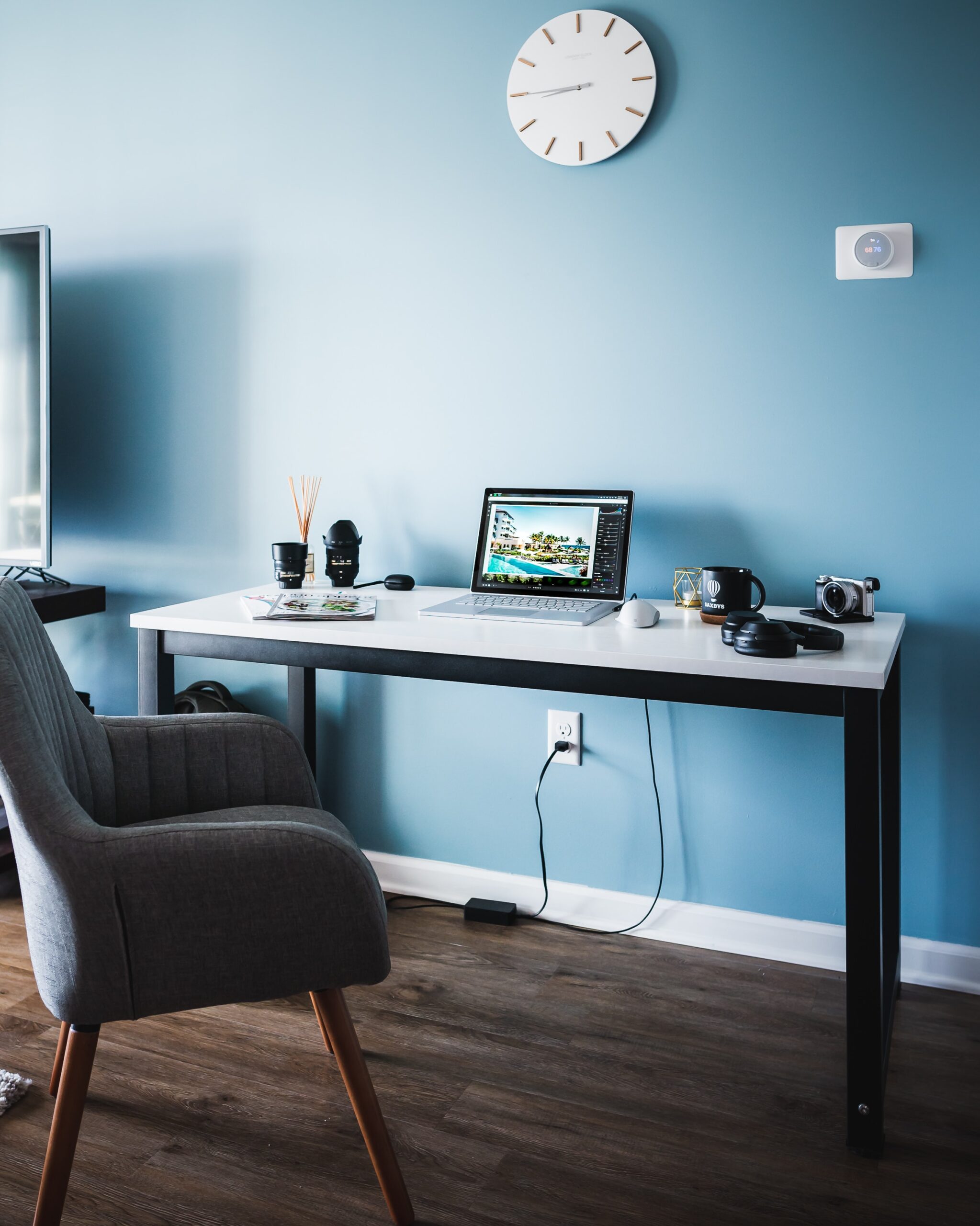A recent transition to working from home can be stressful
Due to the recent coronavirus, you may found yourself stuck at home. Working remotely may be new to you and this transition can lead to an unclear work schedule. Even if you have a clear set of goals that need to be accomplished, working from home can be distracting.
If you have kids or pets, share your apartment with a roommate, or have loud neighbors, it can be difficult to be productive at home. However, there are many professionals who have been working remotely for years that have shown that it can be done with the proper systems in place. If one person is able to do it, that means you can too!
Create a space that is only used for your work
The best way to get focused and ready to do your job is to create a space in your home that’s solely dedicated to working. Ideally, this space will have a desk, chair, power outlet, and a glass of water. It should not be in your living room or bedroom, as these two rooms have many distractions (like your comfy bed).
You want your home workspace to be designed for you to only have a laptop, the charging cable, and a spot for a cup of coffee. If you can set it up in your basement or attic, or if you can create an office room, this would be the best choice. If your only option is your bedroom, make sure your back is turned to your bed while at work.
When you sit down in your chair, you’re ready for work. If you need to block out the rest of the people in the house I suggest using a pair of headphones. If you need to be attentive to children, then you can have the headphones on but have no music playing. The headphones are used to prime your mind to do work and to let others know that you’re busy.
Additionally, you want to save time for checking social media and your emails for after all of your tasks are done. Make sure you turn off all your notifications before going to your workspace. You want to avoid as many interruptions as possible, as it takes roughly 23 minutes to refocus your attention.
Don’t bring your phone along with you when going to your home workspace, try to keep it in a separate room and on vibrate. The only screen that should be with you is the one included with your laptop.
Leverage pen and paper for task management
Don’t underestimate the power that a piece of paper has when tracking your progress. Instead of using a task management app or your calendar, write up two to three critical tasks that need to be completed during the day. You can organize these tasks in order of priority or by how fast you believe you can complete them. However you decide to organize your tasks, make sure you don’t add new tasks to this piece of paper.
One of the reasons you have to turn off all notifications on your phone and laptop is because clients and team members will send you urgent tasks that are only urgent at the moment. These tasks, if truly urgent, can come to your attention through a video chat or phone call if necessary but, never through text or email. Most things that are urgent tend not to be urgent after a couple of hours.
Always defer tasks given to you until after the priority items on your paper to-do list are complete. Also, schedule specific times throughout the day to view texts and email. It should be twice a day, once in the morning before your work begins and in the afternoon after lunch.
Limit the number of meetings you attend
One of the benefits of working remotely is you immediately realize how many meetings are actually necessary for you to do your job. A weekly meeting is all that is necessary for you to know what to do. Sometimes a weekly meeting isn’t necessary, sometimes all you need is a quick text exchange to agree on action items.
In the event that you must attend a remote meeting, always make sure there is a clear agenda, a set start time and end time, and that the meeting ends with clear action items. If these criteria are not met, do not schedule the meeting. It will take away from the work that needs to get done.
Your work-from-home situation will be unique and some of these tips will not be applicable. What you have to remember is that there are remote workers in your industry and with your exact job title, that can provide specific advice. These tidbits are for the general newcomer to remote work.
The transition is always hard for the first two to three weeks, but it can be smooth if you create a system to help you focus and contribute to your team and clients.
Image Credit: Unsplash




